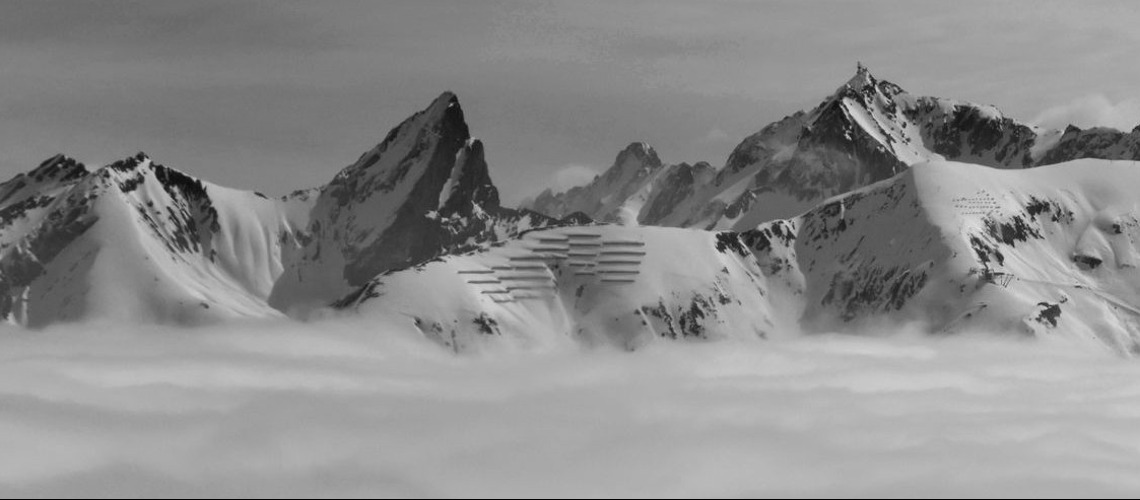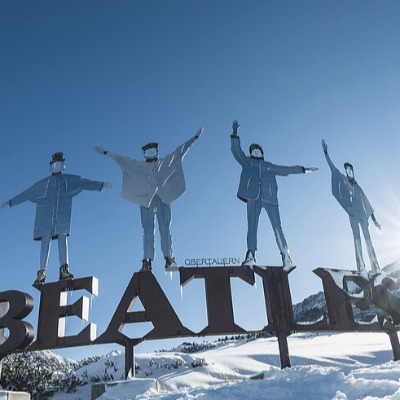FuSE-AT Completed. Detailed Regional Data On Snow Conditions For Austria Created.

The three-year FuSE-AT project was recently completed. For the first time, detailed regional data on snow conditions in the past and future for the entire area of Austria were created.
In FuSE-AT, ZAMG (leader), University of Innsbruck, Climate Change Center Austria and Schneezentrum Tirol created data sets for the development of snow conditions since 1961 and for three different climate scenarios up to the year 2100.
The project "Future Snow Cover Evolution in Austria, FuSE-AT" financed by the climate and energy fund as part of the Austrian Climate Research Program (ACRP) started in 2018. The results are available as an extension of the official Austrian climate scenarios for research and applications via the CCCA data center available. For the first time in Austria, they contain a two-dimensional representation of the development of the snow cover from 1961 to the present day and, based on this, three different future scenarios.
The data is available on a 1x1 kilometer grid, which corresponds to around 84,000 data points in Austria. In addition to snow depths, they also contain many parameters that are important for winter tourism, such as the duration of snow cover and the potential for technical snowmaking.
Distinctive influence of climate protection on snow conditions
"All future scenarios of FuSE-AT show consistently: The further development of the snow situation in Austria is directly related to global climate protection," says project manager Andreas Gobiet from the Central Institute for Meteorology and Geodynamics (ZAMG). “Of course, the snow conditions vary greatly from year to year and depending on the region. And there are also periods of several years with more or less snow. But in the long term, the snow situation depends heavily on the temperature level and thus on the extent of global warming caused by the greenhouse effect caused by humans. We can also see this clearly in the data from the past: Averaged over the entire area and all altitudes in Austria, the duration of the snow cover has decreased by 40 days since 1961.
Basis for adaptation measures in the regions
Climate and Energy Fund Managing Director Ingmar Höbarth: “Scientifically based data on climate change shows which measures are the right ones to mitigate the effects of the climate crisis and to take the right steps to adapt. For example, our climate change adaptation model regions will benefit from the snow scenarios.”
Scenarios to click through
The effects of different future scenarios on the snow situation at different altitudes in Austria are shown in an interactive infographic at fuse-at.ccca.ac.at/infografik. "The most important results of the study are summarized here in a short and understandable way, from urban areas to high mountains," explains project manager Gobiet.
Example 1: the low altitudes of Austria
The evaluations of FuSE-AT show for the very deep layers of Austria, below 400 meters above sea level:
Without global climate protection ("the fossil route", climate scenario RCP8.5), the duration of the snow cover will decrease by 90 percent by the year 2100. Thus, in an average winter, there would only be two days with a solid snow cover.
If the Paris climate agreement is observed (“inevitable climate change, 2-degree path”, climate scenario RCP2.6), the length of snow cover will “only” decrease by 50 percent by 2100. This means that eight days with snow cover can be expected in the low-lying areas of Austria.
Example 2: Locations around 1000 meters, snow-making capability
Locations around 1000 meters above sea level are the starting point for many off-piste activities, such as ski tours and snowshoe hikes, as well as the typical location of many valley stations and cross-country ski trails. For these regions, the evaluations of FuSE-AT result in:
Without global climate protection ("the fossil route"), the duration of the natural snow cover will decrease by 70 percent by the year 2100. This means that only around 30 days with snow cover can be expected here per winter.
If the Paris Climate Agreement (“inevitable climate change, 2-degree path”) is observed, the duration of snow cover will decrease by 25 percent by 2100. This means that around 60 days of snow cover could be expected here per winter, twice as many as without climate protection.
At this altitude, the atmospheric conditions for technical snowmaking fall by 50 percent without climate protection, and by 15 percent if the Paris target is met.
Example 3: Core area for winter sports
Regions from 1500 to 2500 meters above sea level contain the majority of winter sports and winter tourism. For these altitudes, the evaluations by FuSE-AT show:
Without global climate protection ("the fossil route"), the duration of the natural snow cover will decrease by 25 percent by the year 2100. That would mean around 160 days of snow cover per winter.
If the Paris climate agreement (“inevitable climate change, 2-degree path”) is observed, the duration of snow cover will decrease by 10 percent by 2100. That would mean around 190 days of snow cover per winter.
At this altitude, the atmospheric conditions for technical snowmaking fall by 35 percent without climate protection, and by only 10 percent if the Paris target is met.
Case studies with regions
In order to show the usability of snow scenarios for users, case studies were also carried out in the FuSE-AT project in close cooperation with tourism companies. Among other things, the climatological conditions for the two very different ski areas of Brunnalm/Hohe Veitsch (Styria) and Obergurgl (Tyrol) were examined in detail and it was shown that the effects of climate change, taking natural snow and artificial snowmaking into account, are very different depending on the geographical conditions . This leads to very different adaptation strategies.
Important part of business strategy
"Changes do happen and it would be irresponsible for a leisure company not to deal with them, even in a business sense," says Arno Russ, Managing Director of Freizeitbetriebe Veitsch GmbH, "this climate change study is a valuable information basis for us for long-term strategic decisions. "
The FuSE-AT project
The Central Institute for Meteorology and Geodynamics (ZAMG), the University of Innsbruck, the Climate Change Center Austria (CCCA) and the Tirol Snow Center worked together on the "Future Snow Cover Evolution in Austria, FuSE-AT" project. The project was financed by the Austrian Climate Research Program (ACRP) of the Climate and Energy Fund. The aim was to expand the official climate scenarios in Austria (ÖKS15) with data on snow conditions.













